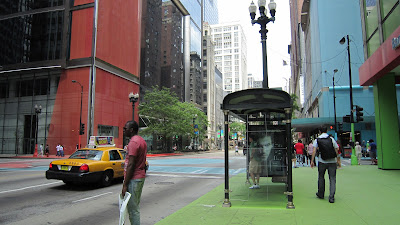 |
| Columbus' Grave in Cathedral in Seville, Spain, Nancy Charak photograph, April 2010 |
I have been reading about The Columbian Exchange; I started with this paper, The Columbian Exchange: A History of Disease, Food and Ideas, by Nathan Nunn and Nancy Qian, Journal of Economic Perspectives--Volume 24, Number 2--Spring 2010--pp 163-188. Here I quote the introductory paragraphs:
"The Columbian Exchange refers to the exchange of diseases, ideas, food crops, and populations between the New World and the Old World following the voyage to the Americas by Christopher Columbus in 1492.
"The Old World—by which we mean not just Europe, but the entire Eastern Hemisphere—gained from the Columbian Exchange in a number of ways. Discoveries of new supplies of metals are perhaps the best known. But the Old World also gained new staple crops, such as potatoes, sweet potatoes, maize, and cassava. Less calorie-intensive foods, such as tomatoes, chili peppers, cacao, peanuts, and pineapples were also introduced, and are now culinary centerpieces in many Old World countries, namely Italy, Greece, and other Mediterranean countries (tomatoes), India and Korea (chili peppers), Hungary (paprika, made from chili peppers), and Malaysia and Thailand (chili peppers, peanuts, and pineapples). Tobacco, another New World crop, was so universally adopted that it came to be used as a substitute for currency in many parts of the world. The exchange also drastically increased the availability of many Old World crops, such as sugar and coffee, which were particularly well-suited for the soils of the New World.
The massive and rapid depopulation of indigenous Amerindians, the wholesale importation of African slaves, both in numbers that are just about unimaginable changed both hemispheres politically and ecologically. Colonization in the new world also changed the landscapes both politically and in nature.
Now I'm reading 1493: Uncovering the New World Columbus Created and 1491: New Revelations of the Americas Before Columbus by Charles C. Mann who is attempting to explain the worlds that existed before and after the Columbian Exchange.
Note that the elaborate catafalque in the photo is the presumed burial place of Columbus, the cathedral in Santo Domingo in the Caribbean lays claim to his remains as well, not to mention Havana and Valladolid.
































